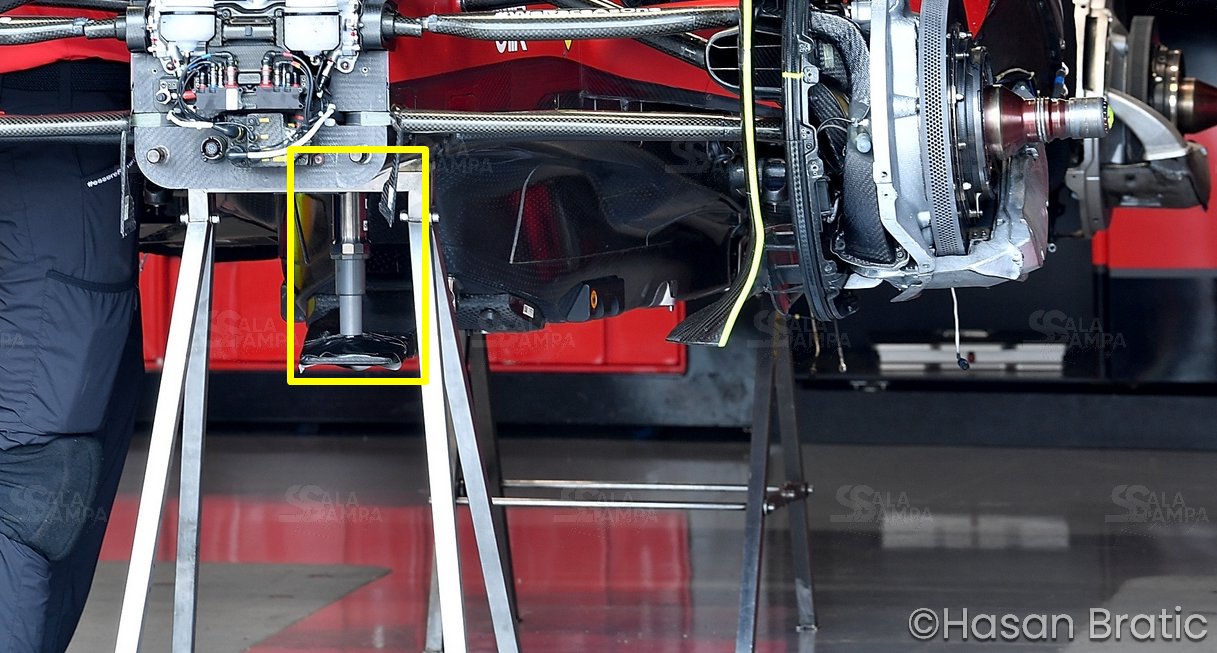JPBD1990 wrote: ↑16 Jun 2022, 23:31
Anyone have any guesses as to how the new anti-porpoising rules would affect Ferrari? It’s clear porpoising is severe on the F1-75. I’ve seen mixed things on twitter - people suggesting that Ferrari has more wiggle room with respect to ride height than, say, Mercedes. That much is clear, but I think this must heavily favour redbull given we have barely if ever seen their car bounce.
Good for drivers and safety and at the end of the day we can’t really have an issue with that, but…. Dark times for Ferrari and the F1-75?? I hope not.
FIA hasn't confirmed how they will choose to monitorize this bouncing but pointed towards vertical acceleration.
The wave equation of vertical oscilations can be presented as: y=Acos(wt), with A=amplitude of the oscilation w=angular frequency.
In such a way the acceleration is the second derivative of position with respect to time so d^2y/dt^2)=w^2Acos(wt).
This means that the acceleration rises linearly with amplitude, and with the square of frequency.
so imagine (hypothetical) you have a car A with 4 times as much bouncing frequency than another car B. Then car B needs to have 16 (4^2) times as much amplitude to have the same acceleration.
I don't know the exact values for the cars, my point is that the more visually pronounced bouncing that has high amplitude and relatively lower frequency (merc/Ferrari) can actually have lower vertical acceleration than one with lower amplitude but higher frequency (RB/AT)


